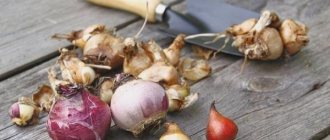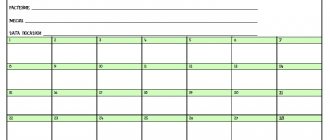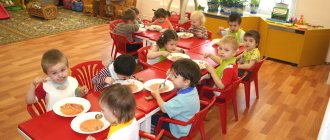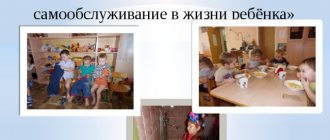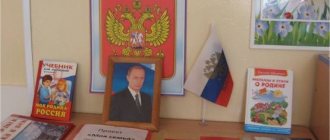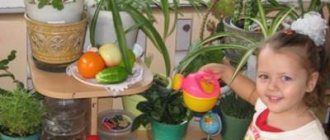Plants in a kindergarten group, in addition to aesthetic ones, also have a number of educational functions. Children learn to care for plants, understand the relationships in nature, and bear responsibility.
When designing a corresponding corner of nature in a group, the following requirements must be strictly observed:
- Plants must be safe (this was stated in previous sanitary and epidemiological requirements. In the current SanPiNs, the phrase about plant safety has been removed as a matter of course). Moreover, if one of the preschoolers is allergic to any plant, then it should be removed immediately.
- The group should have plants that preschoolers can be involved in caring for. Starting from the age of three, children are actively involved in the process of caring for flowers.
- Plants should be attractive to hold the attention of preschoolers.
- The flowers selected for the corner in the group must belong to the ecosystem in which the preschool is located. As a rule, these are unpretentious plants that are easy to care for.
- Plants should be presented in several copies so that children can form an objective idea of a particular plant species.
Specific tasks and plant species are prescribed in the educational program. For example, in the main “Program of Education and Training in Kindergarten” edited by M.A. Vasilyeva (hereinafter referred to as the Program), which is chosen as a priority by more than 50% of preschool institutions, provides a clear description of the responsibilities of preschoolers and the tasks of educators in certain age groups. In our article we will rely specifically on this Program.
Plants in the 2nd younger group
The program prescribes:
- Introduce indoor plants (ficus, geranium).
- Give an idea that plants need soil, water and air to grow.
So far, children’s acquaintance with plants occurs at the simplest level. Children learn to recognize several types of plants by their characteristic features (leaf shape, color, smell), and distinguish between their parts (stem, leaf, flower).
From the age of three, children are actively involved in caring for plants. Teachers pour water into watering cans. Kids learn to hold watering cans correctly, water plants in a kindergarten group, and wipe large plants with a damp cloth.
At this age, preschoolers are attracted to bright colors. For a corner of nature, long-flowering plants are chosen, such as: common geranium, ficus, fuchsia, ever-flowering begonia, camellia, Chinese rose, balsam. The number of species does not exceed three or four.
"KNOW THE PLANT"
Didactic task. Find a plant by name. Game actions. Competition to see who can find the plant faster. Rules: Having found a plant, you need to explain how you recognized it. Progress of the game: Plants (several species of the same family) stand in their permanent places. The teacher tells all the children: “I will name a houseplant, and you must find it, show it and tell me by what characteristic you identified it. Whoever does it faster will get a chip.
"WHAT CHANGED?"
Didactic task: Remember the location, find changes in their location. Game actions. Search for changes in the arrangement of plants. Rule: You cannot watch what the teacher cleans up. Equipment.4-5 plants. Progress of the game. Houseplants are placed on the table in one row. The teacher asks you to look at and remember the location of the plants and close your eyes. At this time, the teacher changes places of the plants. “Now open your eyes and tell me what has changed, what plants have been rearranged? Show me where they stood before?
“FIND A PLANT BY DESCRIPTION”
Didactic task. Find a plant by description. Game actions. Search for a plant by description of its distinctive features. Rule. You can name a plant only after describing it. Equipment.5 – 6 plants, several of them are names of the same family, but different species (fragrant and zonal pelargonium) Progress of the game. 1. The teacher arranges the plants so that the children can clearly see the characteristics of each plant. Then he describes the general characteristics of plants of the same name (say, Tradescantia), after which he names the distinctive characteristics of each plant. Children listen carefully to the story, then show the hidden plant. 2. The teacher invites one of the children to choose and describe a houseplant. The teacher reminds the sequence of description: first you need to say whether there is a trunk and branches. Then remember what they are like (upright, curling, hanging, thin, thick), describe the leaves, their shape, surface (smooth, rough, shaggy), color (dark green, light, variegated, with stripes, etc.). )
"FLOWER SHOP"
Content of knowledge. Together with the children, remember the names of plants, their parts, and the distinctive features of some of them. Didactic task. Describe, find and name objects based on their characteristic features. Rule. Name the department and describe the plant, without saying what it is called. Progress of the game. Houseplants are placed on the table so that children can clearly see each one. This is the Flower Shop. Buyers do not name the plant, but only describe it. The seller must recognize and name it, and then issue the purchase.
"WHERE FLOWERS GROW"
Content of knowledge. Children must learn that flowers in flower beds and indoor plants are grown for beauty. Flowers are given to people on holidays when they go to visit. Flowers bring joy. You can buy them at a flower shop. Tell that there are wildflowers, forest flowers, garden flowers, and indoor flowers. They have different stems, leaves, flowers. Didactic task. Group plants by place of growth, describe, compare their appearance. Equipment. Fresh flowers of different growths or pictures with their images. Progress of the game. Children look at all the proposed plants and determine what species they belong to. Compare by appearance, describe, group.
"FIND THE SAME"
Didactic task. Find objects by similarity. Game actions. Search for a similar item. Rule: You can show a recognized plant only upon a signal from the teacher, after listening to its description. Equipment. Identical plants arranged on two tables or photographs depicting plants. Progress of the game. The teacher shows a plant on one of the tables (photo), describes its characteristic features, and then invites the child to find the same plant in the group.
“WHERE MATRYOSHKA HID”
Didactic task. Find an item using the listed characteristics. Game action. Finding a hidden toy. Rule. You can't peek. Equipment. 4 – 5 plants are placed on the table. Progress of the game: The children are shown a matryoshka doll that “wanted to play hide and seek with them.” The teacher asks the children to close their eyes and at this time hides the toy behind one of the plants. Then the children open their eyes. “How to find a nesting doll? – now, I’ll tell you where the nesting doll hid. The teacher tells what the plant looks like (like a tree, grass), describes its stem, leaves, flowers. Children guess where the nesting doll is hiding.
“WHAT’S MISSING?”
Didactic task. Name the plant from memory (without visual control) Game action. Guess which plant is gone. Rule. Do not pry. Equipment. There are 2 - 3 well-known plants on the table. Progress of the game. The teacher invites the children to look at what plants are on the table and then close their eyes. At this time, the teacher removes one plant: “Which plant is gone?”
“FIND SOMETHING TO TELL ABOUT”
Didactic task. Find a plant according to the adult’s description. Game actions. Guessing plants by riddle-description. Rule: First you need to find the plant that they will talk about, and then name it. Progress of the game.1. The teacher describes one of the plants in the group. Children must find it by description, and if it is familiar to them, then name it. When describing, generally accepted terms should be used: leaf shape, flower color, etc. 2. The teacher invites one child to describe some plant standing on the table. The rest must recognize the plant from the story, show it and name it.
FUN EXPERIENCES IN Educating CHILDREN ABOUT HOUSEPLANTS
WITH AND WITHOUT WATER
GOAL: To identify environmental factors necessary for the growth and development of plants (water, light, heat) MATERIAL: Two identical plants (balsam), water PROCEDURE: An adult suggests finding out why plants cannot live without water (the plant will wither, the leaves will dry out, there is water in the leaves); what will happen if one plant is watered and the other is not (without watering the plant will dry out, turn yellow, the leaves and stem will lose elasticity) The results of monitoring the condition of the plants depending on watering are sketched over the course of one week. Create a model of plant dependence on water. Children conclude that a plant cannot live without water.
IN THE LIGHT AND IN THE DARK
OBJECTIVE: To determine the environmental factors necessary for the growth and development of plants. MATERIAL: cuttings of a houseplant in a pot, a box made of durable cardboard, two containers with soil. PROCEDURE: An adult suggests finding out whether plants need light for life. Cover the pot with the plant cuttings with a cardboard cap. Draw the results of the experiment after seven to ten days (the flower under the cap has become light and pale). Remove the cap. After seven to ten days, draw the result again (the flower turns green in the light, which means that nutrition has formed in it)
CAN A PLANT BREATHE?
PURPOSE: To identify the plant’s need for air and respiration. Understand how the respiration process occurs in a plant. MATERIAL: Houseplant, cocktail straws, Vaseline. PROGRESS: An adult asks if plants breathe, how to prove that they do. Children determine, based on knowledge about the human breathing process, that when breathing, air should flow into and out of the plant. Inhale and exhale through the tube. Then the hole in the tube is covered with Vaseline. Children try to breathe through a tube and conclude that Vaseline does not allow air to pass through. It is hypothesized that plants have very small holes in their leaves through which they breathe. To check this, smear one or both sides of the leaf with Vaseline and observe the leaves every day for a week. After a week, they conclude: the leaves “breathe” on their underside, because those leaves that were smeared with Vaseline on the underside died.
DOES THE PLANT HAVE RESPIRATORY ORGANS?
Goal: Determine that all parts of the plant are involved in respiration. MATERIAL: Transparent container with water, a leaf on a long petiole or stem, a cocktail tube, a magnifying glass. PROCEDURE: An adult suggests finding out whether air passes through the leaves into the inside of the plant. Suggestions are made on how to detect air: children examine a cut of a stem through a magnifying glass (there are holes), immerse the stem in water (observe the release of bubbles from the stem). An adult and children conduct the “Through a Leaf” experiment: pour water into a bottle, leaving it 2-3 cm empty. Insert a leaf into the bottle so that the tip of the stem is immersed in water. Cover the hole of the bottle tightly with plasticine, like a cork. Here they make a hole for the straw and insert it so that the tip does not reach the water, secure the straw with plasticine. Standing in front of a mirror, suck the air out of the bottle. Air bubbles begin to emerge from the end of the stem immersed in water. Children conclude that air passes through the leaf into the stem, since bubbles can be seen releasing into the water from the stem.
WHO IS BETTER?
OBJECTIVE: To identify favorable conditions for the growth and development of plants, to substantiate the dependence of plants on the soil. MATERIAL: Two identical cuttings, a container with water, a pot with soil, plant care items. PROGRESS: An adult suggests determining whether plants can live for a long time without soil (they cannot); Where do they grow best - in water or in soil. Children place geranium cuttings in different containers - with water, with soil. Watch them until the first new leaf appears. Document the results of the experiment in an observation diary and in the form of a model of the plant’s dependence on the soil (a plant in the soil has a new leaf faster, the plant gains strength better, the plant is weak in water)
LABYRINTH
OBJECTIVE: To establish how a plant seeks light. MATERIAL: Cardboard box with a lid and partitions inside in the form of a labyrinth; There is a potato tuber in one corner and a hole in the other. PROCEDURE: Place a tuber in a box, close it, place it in a warm place, with the hole facing the light source. Open the box after potato sprouts appear in the hole. Examine, noting their direction and color (sprouts are pale, curved). Leaving the box open, continue to observe the change in the color of the sprouts and the direction of growth (they have turned green and are stretching in different directions). The conclusion is formulated: the plant grows better in the light.
WHAT DO PLANTS NEED FOR NUTRITION?
PURPOSE: To establish the need for light to feed the plant MATERIAL: Indoor plants with hard leaves (ficus, crassula), adhesive plaster PROCEDURE: An adult offers the children a riddle letter: what will happen if part of the leaf does not receive light (part of the leaf will be lighter). Children's assumptions are tested by experience: part of the leaf is covered with a plaster, the plant is placed near a light source for a week. After a week, the patch is removed, and the children conclude: without light, food cannot be formed in plants.
FOOD FACTORY
OBJECTIVE: Determine that the plant can provide its own nutrition. MATERIAL: A pot with a plant inside a glass jar with a wide neck, an airtight lid. PROCEDURE: Children place a cutting of a plant in water or a plant in a small pot inside a large transparent container. The soil is watered. The container is hermetically sealed with a lid and placed in a warm, bright place. The plant is monitored for a month. They find out why it did not die (the plant continues to grow, drops of water periodically appear on the walls of the jar, then disappear). The plant feeds itself.

Plants in the middle group
The program prescribes:
- To consolidate knowledge about herbaceous and indoor plants (impatiens, ficus, chlorophytum, geranium, begonia, primrose and others), ways to care for them.
- Expand children's understanding of the conditions necessary for the life of people, animals, plants (air, water, food, etc.).
From the age of 4, children learn to see a variety of properties and qualities. They can more easily identify the characteristics of plants and understand the processes that are necessary for the life of flowers.
Children's help is becoming more structured. They learn to water plants in the kindergarten group with a fine mesh watering can, spray with a spray bottle, clean drooping leaves with a dry brush, and clean leaves with a damp cloth or a jagged brush. Preschoolers are already able to independently determine whether a plant needs watering or not, based on the color of the soil (if the soil is dry, it needs to be watered, if the soil is dark, the plant does not need watering).
To the variety of plant species from last year's group are added: aloe or agave, begonia rex, fragrant geranium, zonal geranium, aspargus.
What plants are prohibited on your own territory?
Which narcotic plants are prohibited for cultivation in the Russian Federation?
- Blue Lotus
- Mushrooms of any kind containing psilocybin and/or psilocin
- Mescaline-containing cactus and other mescaline-containing cactus species
- Cat
- Cocaine bush
- Hemp
- Soporific poppy and other types of poppy of the genus Papaver containing narcotic drugs
Interesting materials:
How to spray cabbage with ammonia? How to spray tomatoes with iodine? How to spray cabbage with ash? How to spray with onion peels? How to spray cucumbers with milk and iodine? How to spray tomatoes with boric acid for ovary? How to spray tomatoes with milk with iodine? How to spray a flower of female happiness? How to dust with tobacco dust? How to lower assembled blinds?
Plants in the older group
The Program stipulates:
- Continue to introduce indoor plants.
- Learn to care for plants.
- Describe methods of vegetative propagation of plants.
Children's knowledge becomes more in-depth. Preschoolers are taught what a plant needs to grow, which can lead to its death. Children learn to determine how to care for plants based on the appearance of the stem and leaves. A new topic is plant propagation vegetatively, using stem cuttings.
Five years is the age at which a child can care for plants independently, without prompting from a teacher.
Some of the plants from last year are distributed to parents or given to a younger group. At the same time, their place can be taken by plants with various stems (creeping, climbing), having bulbs: tradescantia, climbing ivy, cactus, cyclamen, primrose, amaryllis, clivia, indoor grapes.
What flowers should be in the early age group?
To the corner of nature for junior groups
plants are placed that have clearly defined main parts (stem, leaves) and bloom brightly, abundantly and for a long time. These are ordinary (or zonal) geranium, fuchsia, ever-flowering begonia, impatience (“light”), azalea, Chinese rose, etc.
Interesting materials:
How are veteran benefits calculated for retirees? How to put on a celandine collar? How should I write an application? How should an Orthodox Christian be baptized correctly? How are vacation days accumulated? How to set the New Year's table? How to set the table for a new one? How does the tax office calculate the average salary for an enterprise? How to overlay a photo on a photo for Instagram? How to overlay a photo on a photo in a story?
Plants in the preparatory group
The program prescribes:
- Concretize children's ideas about the living conditions of indoor plants.
- Introduce methods of their vegetative propagation (cuttings, leaves, tendrils).
- Learn to establish connections between the state of the plant and environmental conditions.
- Introduce medicinal plants (plantain, nettle and others).
Children are taught about the seasonality of plants, the main stages of their growth and development, and the patterns of propagation using leaf cuttings.
Plants that are radically “opposite” in their needs are added to the corner: cactus and Uzambara violet - on the one hand (plants that do not need constant watering), and papyrus, tradescantia, primrose - on the other hand (plants that need constant watering) .
Author: Maria Danilenko.
